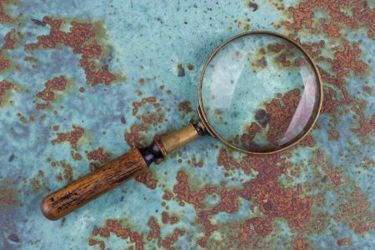There Are 9 Million Lead Pipelines In The U.S., But Water Systems Need Ratepayer Help To Find Them


As systems across the country face a reckoning over dangerously outdated drinking water infrastructure, some cities are now asking ratepayers to help evaluate the safety of their own water lines — including one of the largest systems in the U.S.
“Baltimore is among the cities asking homeowners to test their own pipes for lead and complete an online survey with their results, as it races to complete a required inventory of its pipes,” The Baltimore Sun reported. “The test only requires a few household items — a key, a magnet and a penny — and it will help the city identify hundreds of thousands of uncategorized pipes.”
Lead-based pipelines, which were a popular choice decades ago, have been found to leech the contaminant into drinking water as it travels from treatment plants and into homes, potentially endangering consumers. The U.S. EPA estimates America’s drinking water infrastructure to include 9 million lead-based pipelines and believes that $625 billion will be needed to update it.
But as the federal government seeks to wrangle money to help fund replacements, water systems face another major obstacle: identifying which pipelines are made of lead.
“Between Baltimore and Baltimore County — which also uses the city’s drinking water — 78% of all service lines — more than 186,000 in the city and 155,000 in the county — are an unknown material,” according to the Sun. “Of the unknown pipes, about 93% are on the customer-side, and bring water to individual homes, business and industrial properties. The remainder are on the utility-side, which may run under streets and sidewalks.”
Turning to customers for help with identifying so many mysterious pipes, Baltimore is asking them to first identify where the service line enters their home. Then they should scratch the pipe lightly with a sharp edge and note the color that appears — a shiny silver means it is probably made of lead. Then, to confirm, they should check if the pipe is magnetic, as a lead pipe wouldn’t be. Finally, they are asked to take a picture of their pipe and submit the information on the Baltimore City and County website.
Just like many other cities around the country, Baltimore is doing everything it can to solve its drinking water infrastructure problems before a federal inventory deadline of next October.
“Between now and the federal deadline in October 2024, our team, in partnership with Baltimore County, is going to be conducting significant public outreach directly to our residents — everything from engaging with members of the media … and even demonstrations on how to do your tests, and even going door to door canvassing neighborhoods,” said Baltimore Mayor Brandon Scott, per WBALTV.
If consumers in Baltimore are really able to pitch in and collect an inventory of their pipeline material, other water systems might try similar tactics as well.
To read more about how water systems evaluate their buried infrastructure, visit Water Online’s Drinking Water Distribution Solutions Center.
